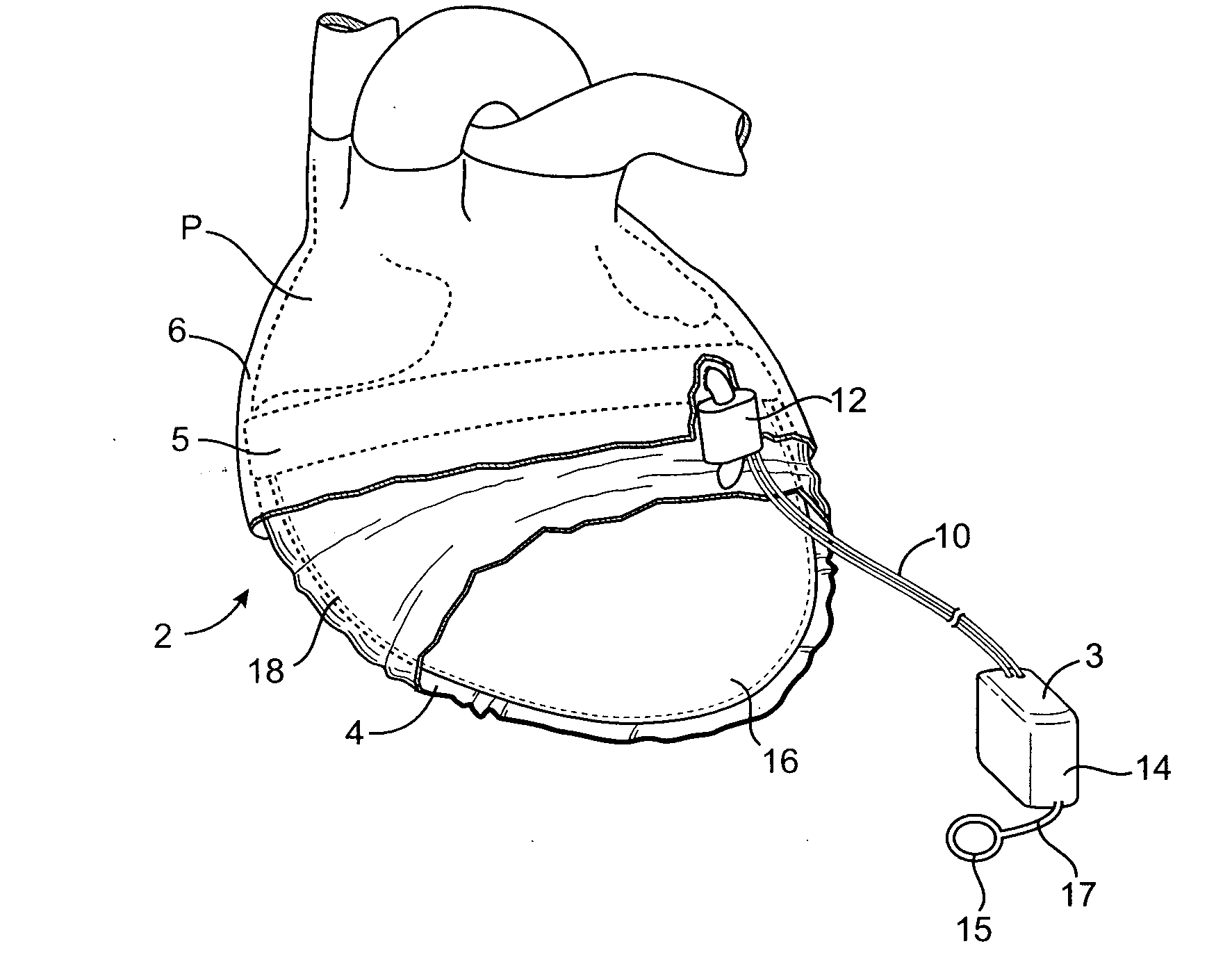Devices and methods for providing cardiac assistance
a technology of cardiac assistance and devices, applied in the field of devices and methods for providing cardiac assistance, can solve the problems of balloons or membranes becoming relatively rigid structures, difference in pressure applied on opposite sides of the liner, and uneven pressure distribution over the surface of the heart, so as to minimize complications with long-term assistance, provide a protective function, and avoid significant deformation of the natural ventricular anatomy.
- Summary
- Abstract
- Description
- Claims
- Application Information
AI Technical Summary
Benefits of technology
Problems solved by technology
Method used
Image
Examples
Embodiment Construction
[0044] Referring to FIGS. 1-5, a cardiac assist device 2 in accordance with the present invention is shown. The device 2 includes a first pumping space 4 which assists one or both ventricles and a second pumping space 6 which assists one or both atria in pumping blood. Fluid (for example, a gas such as CO2 or a liquid such as saline) is pumped into and out of the pumping spaces 4, 6 so that fluid pressure is exerted on the outside wall of the heart to aid the heart in pumping blood. As will be discussed below, some advantages are found when practicing both atrial and ventricular support, however, the present invention provides aspects for atrial and ventricular support which may be practiced independently.
[0045] The cardiac assist device 2 includes a cardiac monitoring device 8 with one or more leads 10 attached to the heart to monitor cardiac activity. The cardiac monitoring device 8 is coupled to a pump 12 through a control system 3, which may be integrated with a battery 14, so ...
PUM
 Login to View More
Login to View More Abstract
Description
Claims
Application Information
 Login to View More
Login to View More - R&D
- Intellectual Property
- Life Sciences
- Materials
- Tech Scout
- Unparalleled Data Quality
- Higher Quality Content
- 60% Fewer Hallucinations
Browse by: Latest US Patents, China's latest patents, Technical Efficacy Thesaurus, Application Domain, Technology Topic, Popular Technical Reports.
© 2025 PatSnap. All rights reserved.Legal|Privacy policy|Modern Slavery Act Transparency Statement|Sitemap|About US| Contact US: help@patsnap.com



